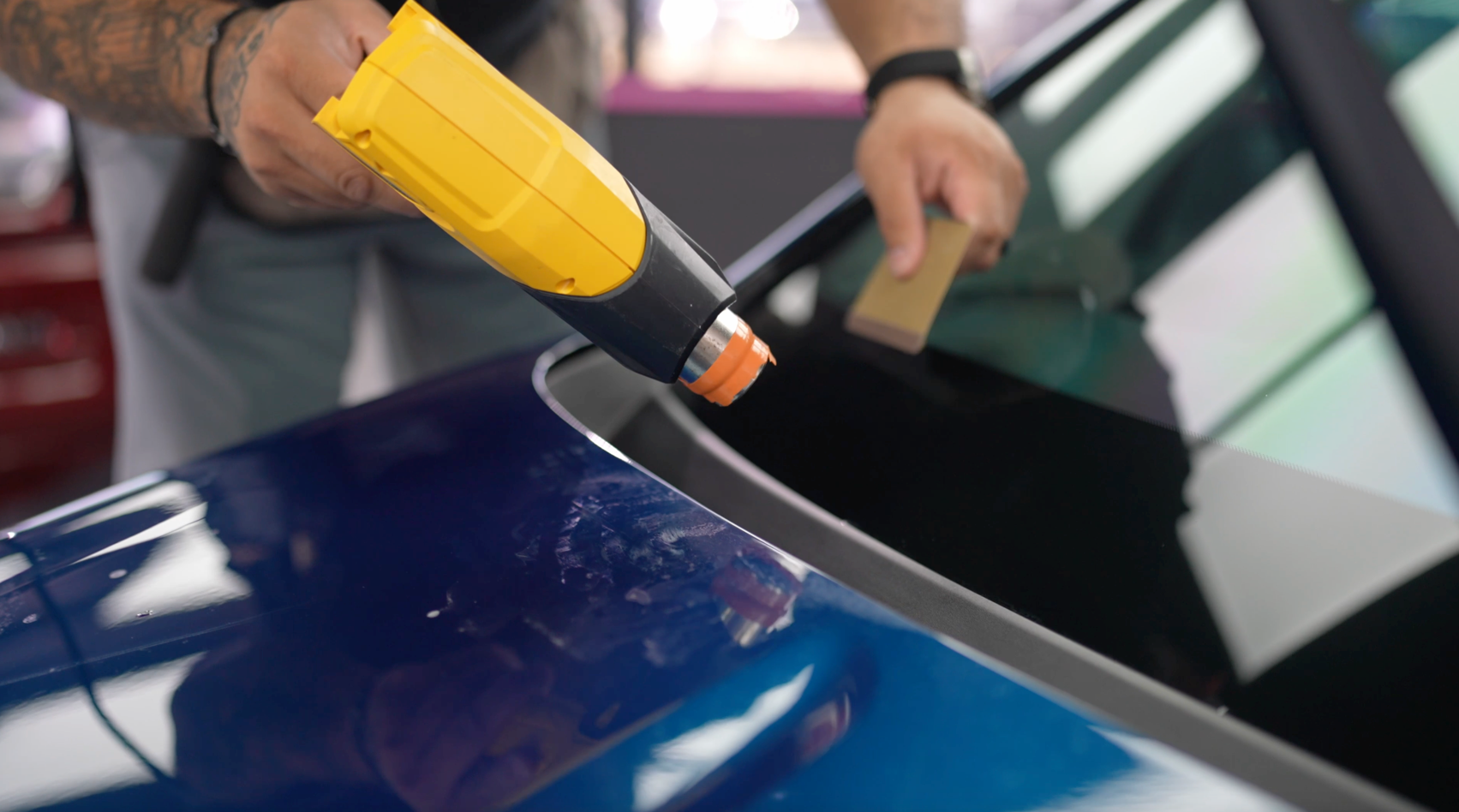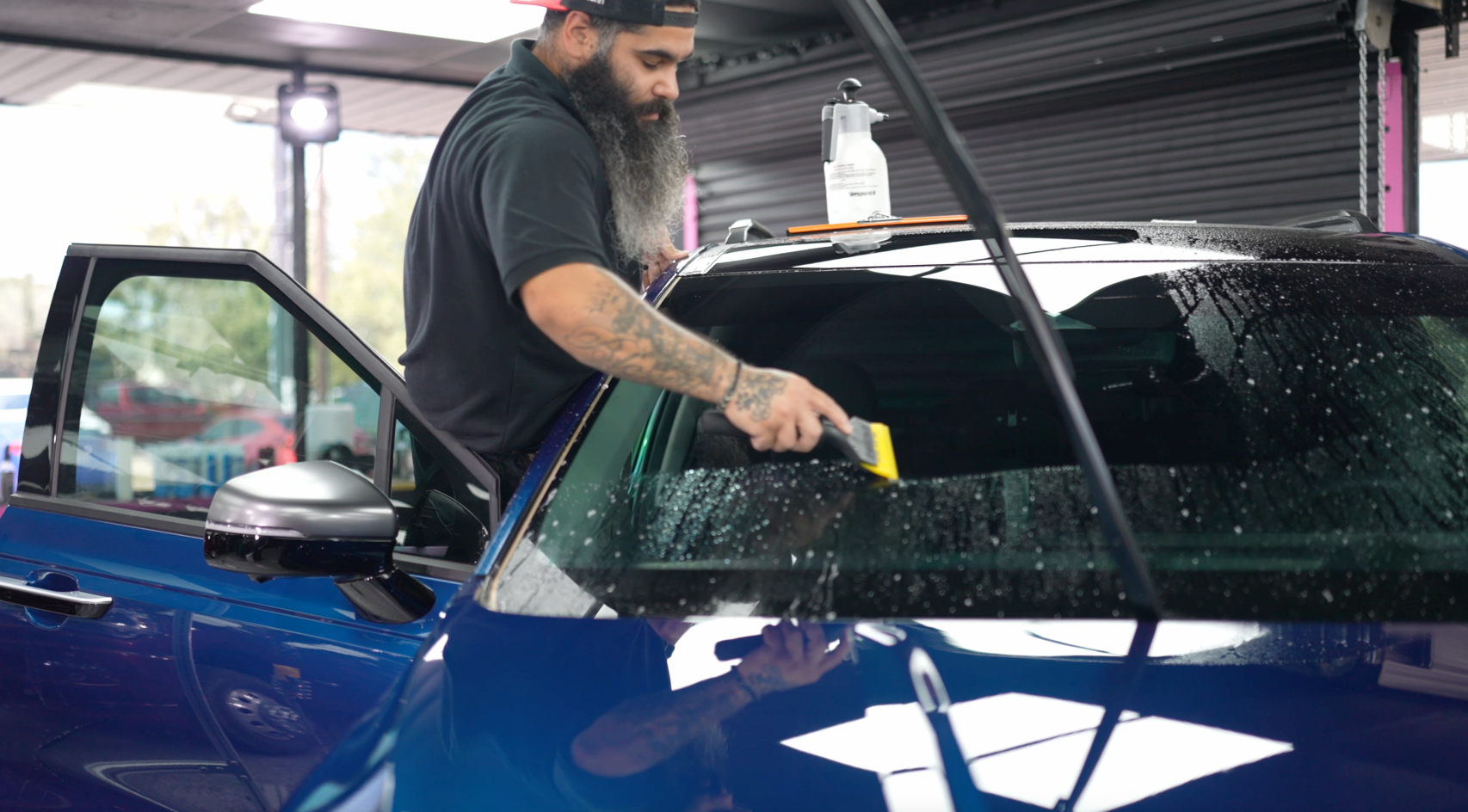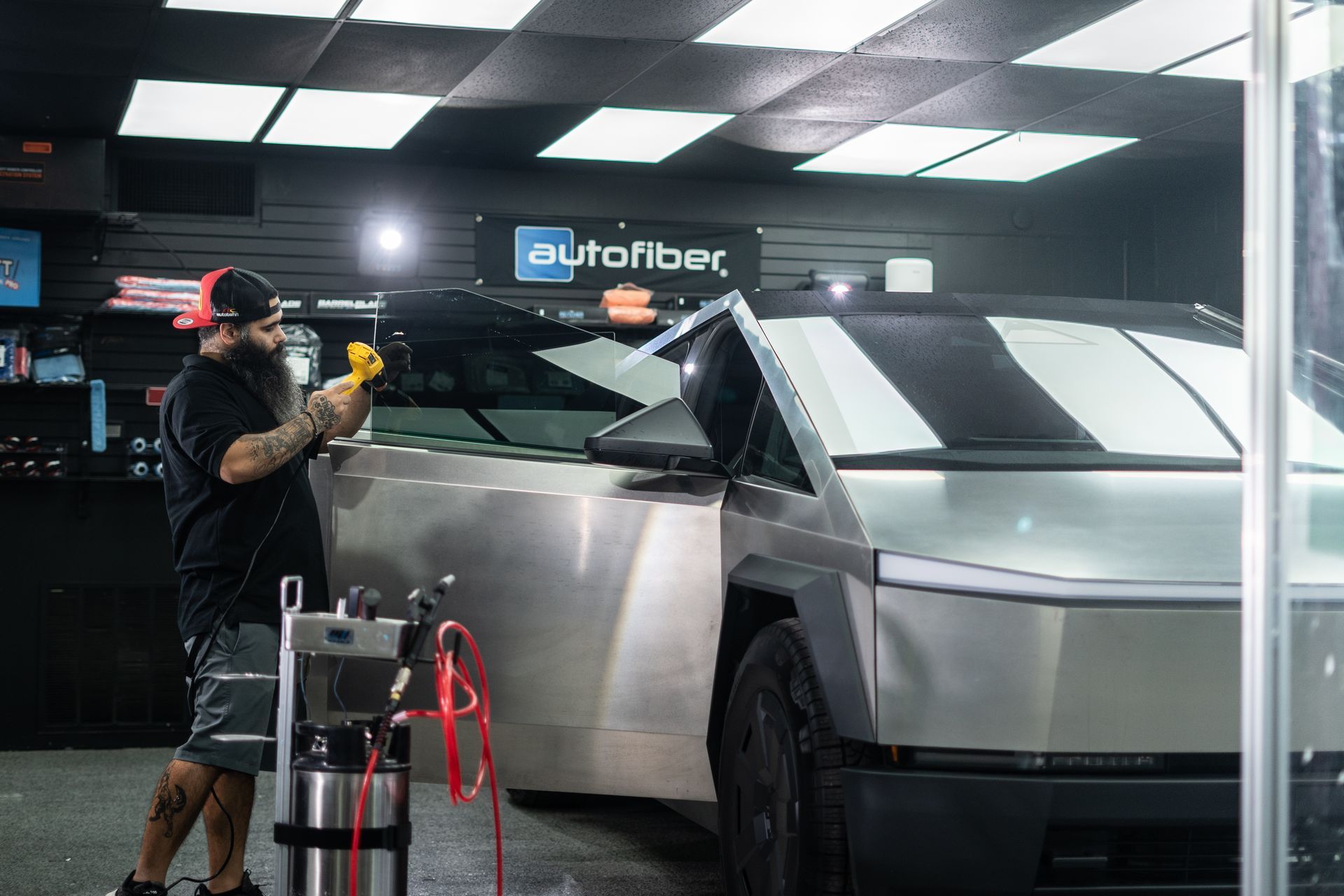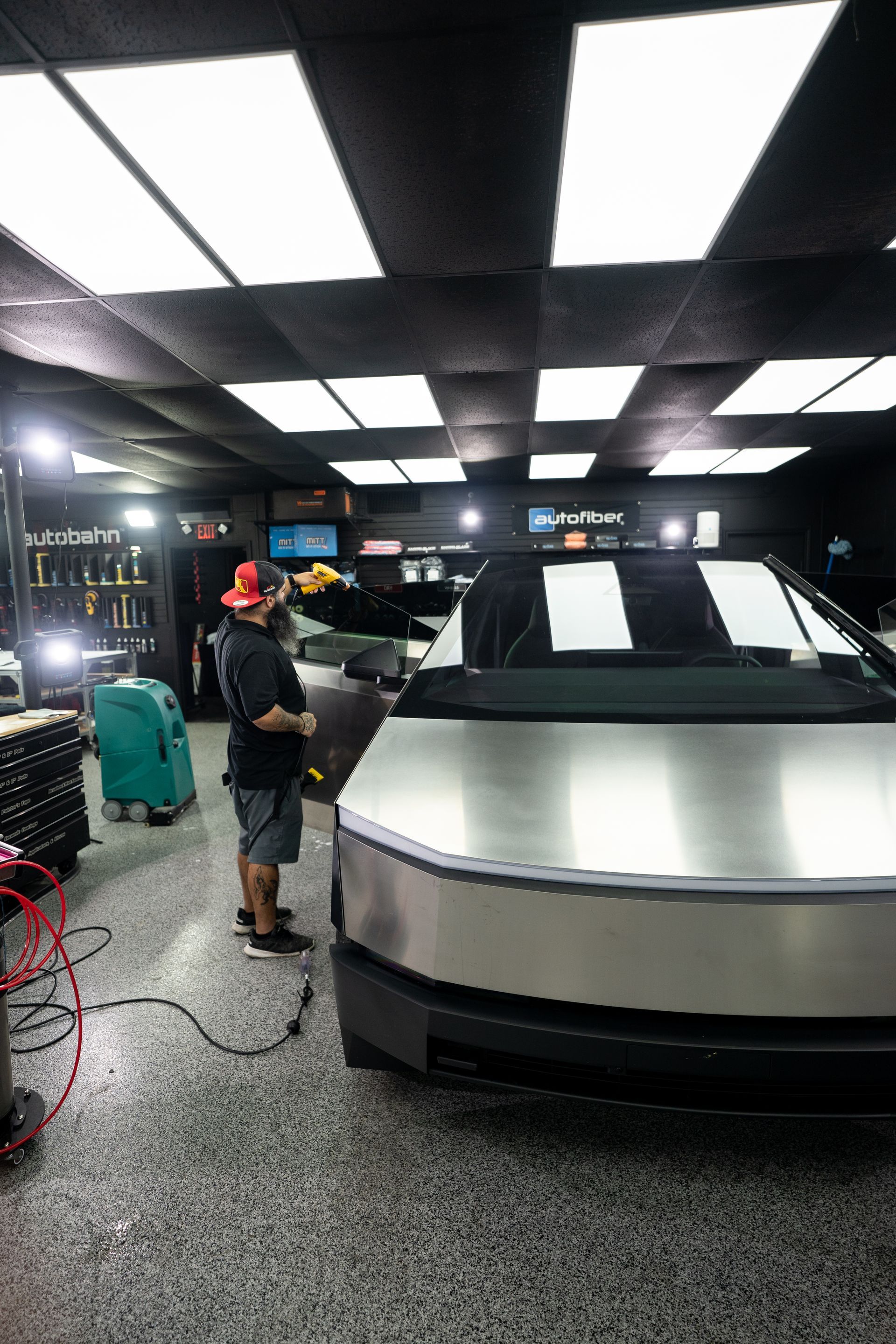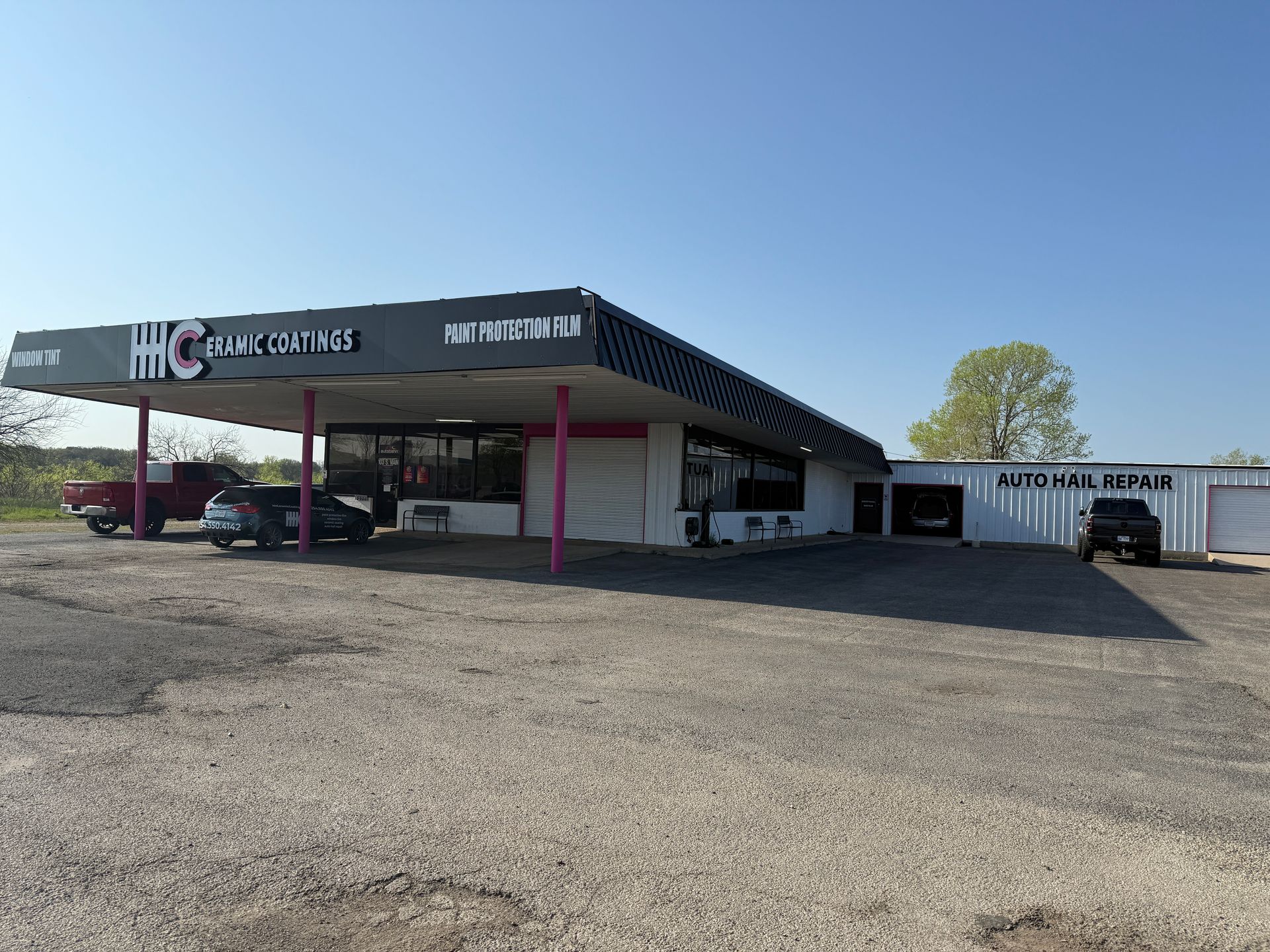CALL (254) 550-4142
Auto window tinting isn’t just about making your car look cool; it has real benefits that can save you money and keep your ride comfortable. Imagine stepping into a vehicle on a scorching summer day and feeling the heat hit you like a brick wall. Now picture that same scenario, but inside a car with tinted windows—much cooler and much more enjoyable! This simple upgrade can cut down on how hard your air conditioning needs to work, leading to lower fuel costs and helping your car's interior stay in great shape longer. With all these perks, it’s worth taking a closer look at how auto window tinting plays a crucial role in energy efficiency and cost savings.
Auto window tinting improves energy efficiency by rejecting solar heat, which can reduce the reliance on air conditioning systems. By blocking up to 95% of the sun's heat and allowing for a cooler interior, window tinting can lead to significant fuel savings and increased comfort for vehicle occupants.
Different Types of Auto Window Tints
When it comes to auto window tinting, choosing the right type can significantly affect both energy efficiency and overall comfort in your vehicle.
- Ceramic Window Tints: The ceramic tints offer unparalleled protection against UV rays. Made with unique ceramic particles, they excel at blocking out up to 99% of these harmful rays while keeping your car's interior temperature down. What’s important is that ceramic tints are completely non-metallic, so they won’t disrupt any electronic signals—such as those from your GPS or cellphone. Imagine driving on a hot summer day without worrying about whether your navigation app will lose signal; that's the beauty of ceramic tints.
- Metalized Window Tints: Metalized window tints represent a middle-ground option in terms of price and functionality. These tints utilize layers of metal particles embedded in the film, effectively reflecting solar heat and blocking harmful UV rays. This can result in lower temperatures inside your vehicle even when parked under intense sunlight. On the downside, this type could interfere with electronic signals, which might not be ideal for tech-savvy drivers relying heavily on connectivity. Nevertheless, their increased shatter resistance makes metalized tints an appealing choice.
- Dyed Window Tints: These films consist of layers infused with dye that absorb solar heat, thereby keeping your car cooler. However, although they may fit nicely into tight budgets, remember that they offer limited heat rejection compared to ceramic or metalized varieties. If you opt for dyed tinting, you should be aware that while you're saving upfront costs now, you might face more frequent replacements later due to fading. In practical terms, dyed tints serve well in providing added privacy but come with caveats regarding long-term durability and effectiveness in blocking heat and UV rays.
Every type of tint presents unique advantages, making it essential to understand these differences as you consider the various features available for energy efficiency and cost savings before moving on to explore effective methods for controlling UV light and reducing glare.
UV Light Control and Glare Reduction
Effective control of UV light and glare is among the most notable benefits of automotive window tinting. Tinted windows can block up to 99% of harmful UV rays, according to studies conducted by the Skin Cancer Foundation. This protection is essential for both occupants’ skin and preserving your vehicle's interior against the harsh effects of sunlight. You might visualize your car on a hot summer day, where the sun seems relentless, streaming through the clear windows. Without tinting, your upholstery could suffer severe fading, necessitating costly repairs or replacements down the road.
Imagine how that reduction in fading can extend the lifespan of your car's upholstery and save you hundreds of dollars in potential repairs. It's an investment in comfort and aesthetics that pays off over time. The advantages extend beyond just protection from harmful rays. Tinted windows significantly reduce glare from both sunlight and headlights at night. This benefit is particularly vital for drivers who have light sensitivity or those who often commute during peak sunlight hours when the brightness can be blinding. It’s less about merely blocking light and more about creating a comfortable driving experience, allowing you to focus fully on the road ahead.
Studies indicate that window film can decrease glare by approximately 50% with a visible light transmission (VLT) of 50%. This reduction enhances comfort and contributes directly to energy conservation, as it decreases dependency on additional climate control measures like air conditioning. With lower cabin temperatures achieved through tinting, drivers will notice less strain on their vehicles’ cooling systems. Each layer of protection and comfort adds to a more enjoyable driving experience while enhancing energy efficiency within your vehicle's overall performance.
Mechanism Behind Heat Reduction
The science behind window tinting is quite fascinating, as it utilizes specially designed films that interact with sunlight to create a more comfortable environment inside your vehicle. At the core of this technology is the ability to filter and block various wavelengths of light, particularly the infrared rays notorious for causing heat buildup. When you install high-quality tints, especially those made from ceramic or metalized materials, you're effectively creating a shield that reflects these heat-inducing rays away from the glass.
It's interesting to note that infrared rejection is not just a feature; it's a primary mechanism that enhances energy efficiency. As these tints reflect the sun's rays, they drastically reduce the amount of heat entering the vehicle. Imagine parking your car in direct sunlight; without any tinting, the temperature inside can soar to a staggering 54°C (130°F) in less than an hour. With effective window tinting in place, however, that temperature can be significantly reduced by 15-20%. This means far less reliance on air conditioning—better for your wallet and for the environment—and a much cooler ride once you return to your vehicle.
So when we think about automotive window tinting, we're not only considering aesthetics or privacy; we are engaging with a practical tool that plays an essential role in energy efficiency and passenger comfort. By understanding how it works—in terms of infrared rejection and temperature moderation—you empower yourself to make informed choices that enhance both your driving experience and conserve energy over time.
Long-Lasting Material Benefits
The durability of window tinting materials significantly contributes to their cost-effectiveness, making them a smart investment in energy efficiency and comfort. High-quality options like ceramic and metalized films are particularly noteworthy for their extended life spans, often exceeding ten years. Unlike cheaper alternatives, these materials resist the common pitfalls of fading, bubbling, and peeling. This means they consistently deliver superior heat rejection and UV protection throughout their lifespan, enhancing both the vehicle's appearance and interior climate.
However, this durability isn’t merely about looks; it translates directly into savings. While the initial investment in ceramic or metalized films may seem steep compared to dyed tints, such costs must be viewed through a long-term lens. Over time, the longevity of these high-quality tints reduces the frequency of replacements—making them far more economical when averaged out annually. Investing in durable materials means you won’t face frequent reapplications that can add unnecessary expenses. A high-quality tint can last up to a decade or more with proper care—and during that time, it continues to provide vital savings on energy costs.
It’s easy to dismiss the upfront expense of premium tints as too high; however, doing so overlooks the savings accrued over time. Think about it: would you rather buy a cheaper phone every few years or invest in a high-end model that will last—reducing not only costs but also hassle? The same principle applies here.
Professional vs. DIY Installation
Proper installation of auto window tinting is essential not only for achieving a polished appearance but also for ensuring long-term effectiveness. While many may consider tackling this task themselves, it’s vital to weigh the pros and cons of DIY kits versus professional services.
The Benefits of Professional Window Tinting Service
Although DIY kits are enticing, particularly for their affordability, they often fall short in delivering the desired outcomes. Experienced professionals bring invaluable skills and tools to the table, allowing them to apply tints evenly while avoiding unsightly air bubbles. This expertise guarantees full coverage and precise alignment with your vehicle's edges, which is crucial for both aesthetics and functionality. Imagine standing beside your car on a sunny day only to see areas where the tint has faded or where air bubbles remind you of your rushed DIY effort. It can be discouraging; thus, opting for a professional service comes highly recommended.
With professionals handling your tinting needs, you gain several additional advantages. Professional installers ensure a smooth, bubble-free finish. They also bring knowledge of local regulations pertaining to tint levels, ensuring compliance with legal standards. This is particularly important as laws can vary significantly from region to region. Moreover, many professional services provide warranties on their work. This extra layer of protection offers peace of mind against any potential defects or early wear.
Maximizing Comfort and Savings
Auto window tinting offers more than just a sleek appearance—it enhances comfort, protects your vehicle, and improves energy efficiency. By reducing heat buildup, minimizing glare, and blocking harmful UV rays, tinted windows create a safer and more enjoyable driving experience. Whether you’re looking to preserve your car’s interior or save on fuel costs, window tinting is a smart investment with lasting benefits.
- Enhanced Cooling and Energy Efficiency: Auto window tinting helps maintain a cooler interior by reducing heat buildup inside the vehicle. This decrease in temperature lessens the strain on your air conditioning system, allowing it to operate more efficiently. Tinted windows can reduce AC usage by nearly 30%, leading to noticeable fuel savings of around 3-4%.
- Improved Comfort and Reduced Glare: Tinted windows minimize glare, making driving more comfortable in bright or reflective conditions. On long road trips, passengers benefit from a consistently cool cabin without constant light adjustments. Reduced glare enhances both comfort and safety by improving visibility and reducing eye strain.
- Protection for Your Vehicle’s Interior: Prolonged exposure to UV rays can cause your car’s upholstery and dashboard to fade over time. Window tinting blocks up to 99% of harmful UV rays, preserving the quality and longevity of interior materials. This preventive measure helps you avoid costly repairs and replacements, keeping your vehicle looking newer for longer.
Auto window tinting offers a blend of comfort, efficiency, and long-term cost savings that make it a valuable upgrade. From reducing heat and glare to preserving your car’s interior, the benefits are both immediate and lasting. Whether for style, protection, or practicality, tinting is a wise decision that enhances your driving experience while promoting energy efficiency.
Premium Window Tinting for Style and Comfort
Beat the Texas heat and enhance your vehicle’s style with
professional window tinting from Harker Heights Ceramic Coatings. Our high-quality films provide superior UV protection, interior cooling, and glare reduction while adding a sleek, refined look to your ride. With expert installation and a range of tint options, we ensure long-lasting performance and a flawless finish. Upgrade your driving experience—book your window tinting appointment today! Call us at
(254) 550-4142 to get started!

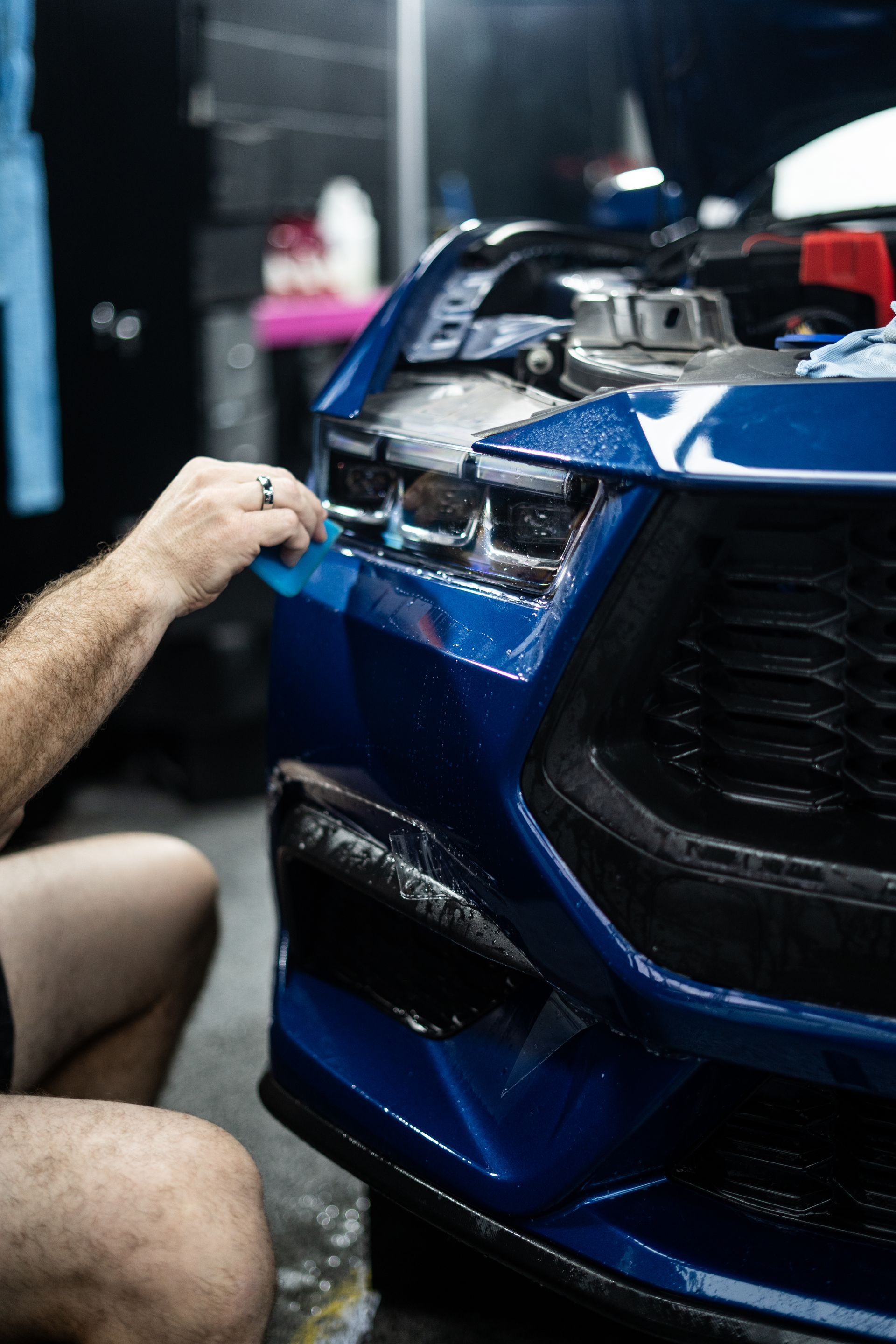
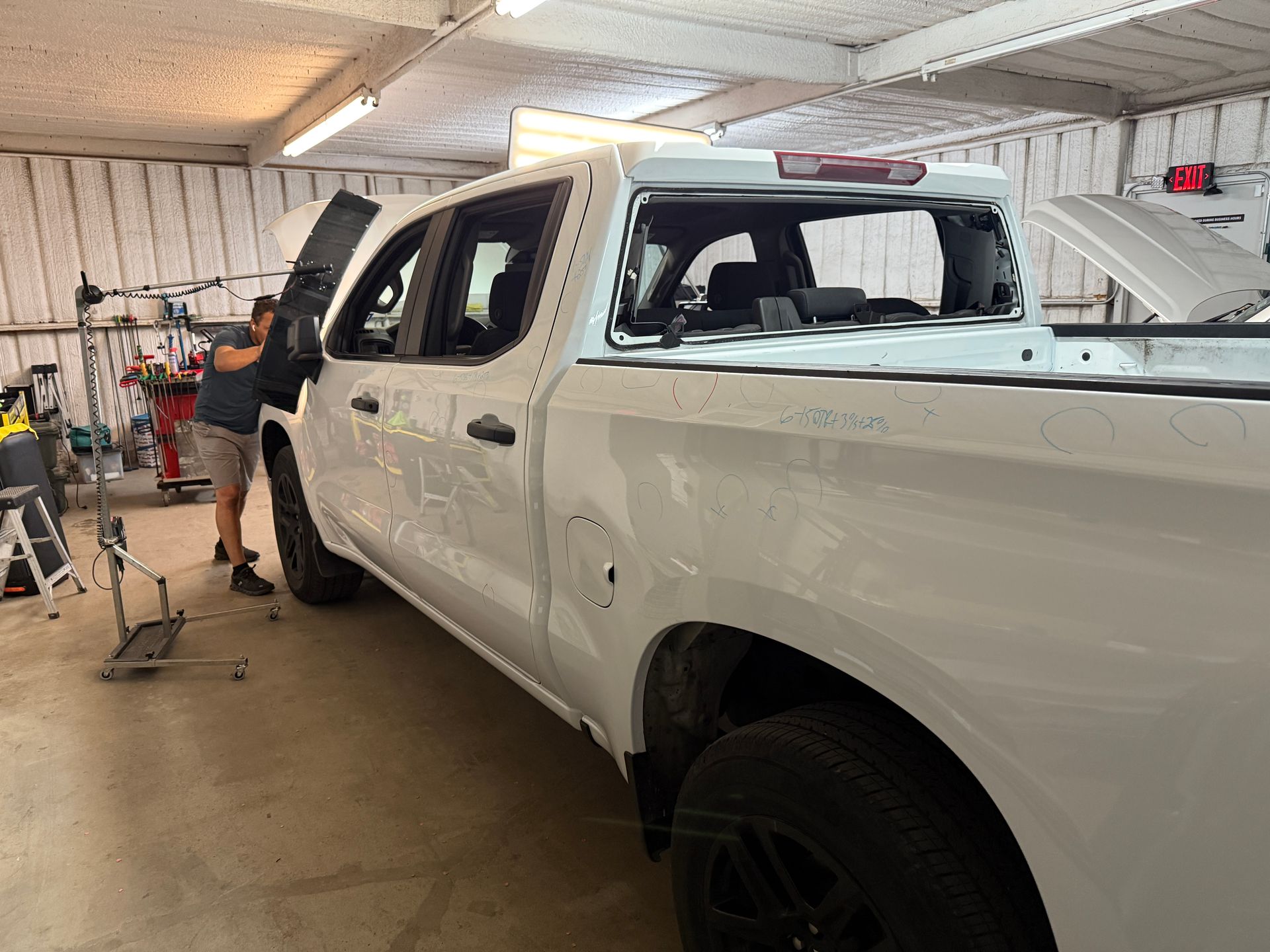
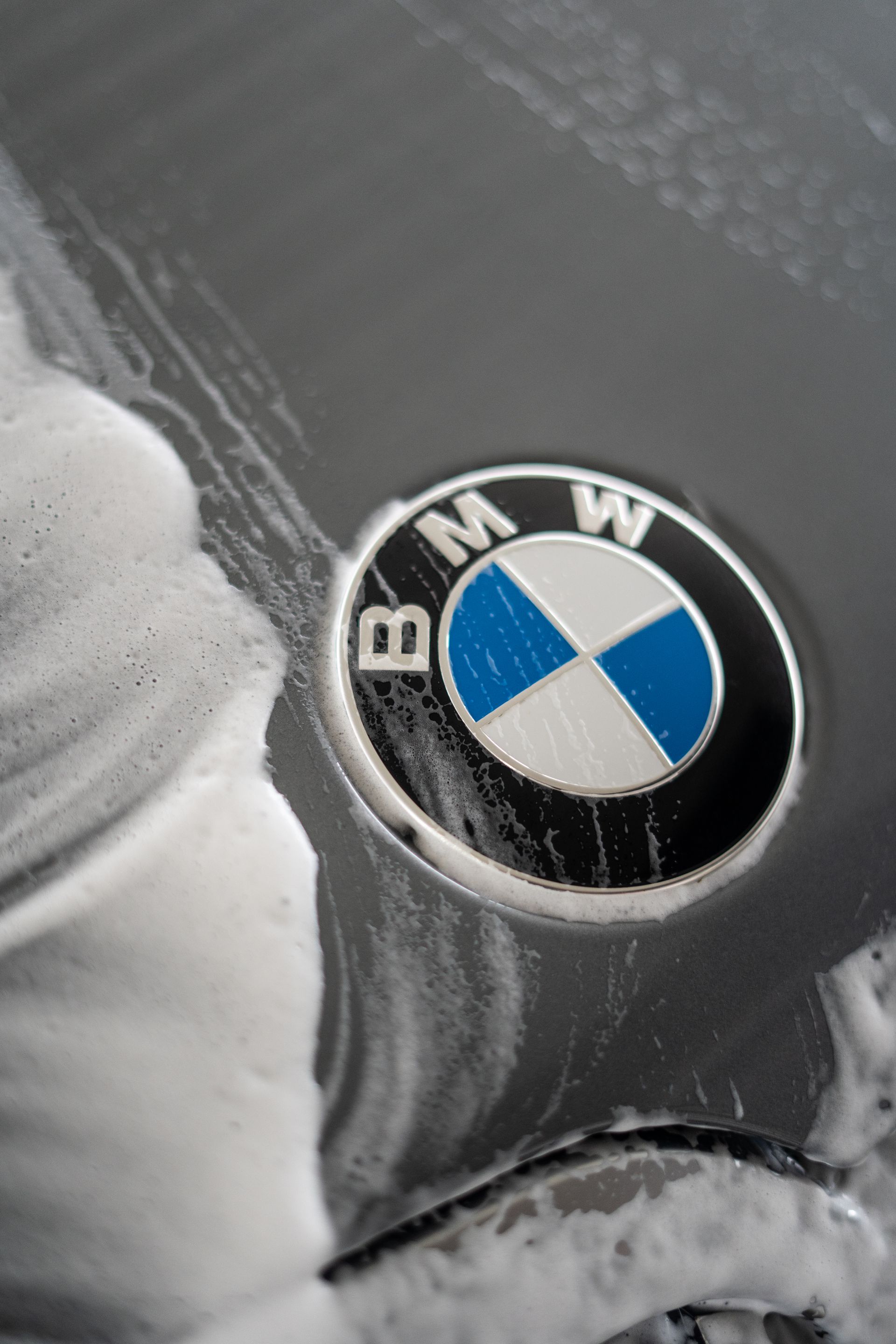
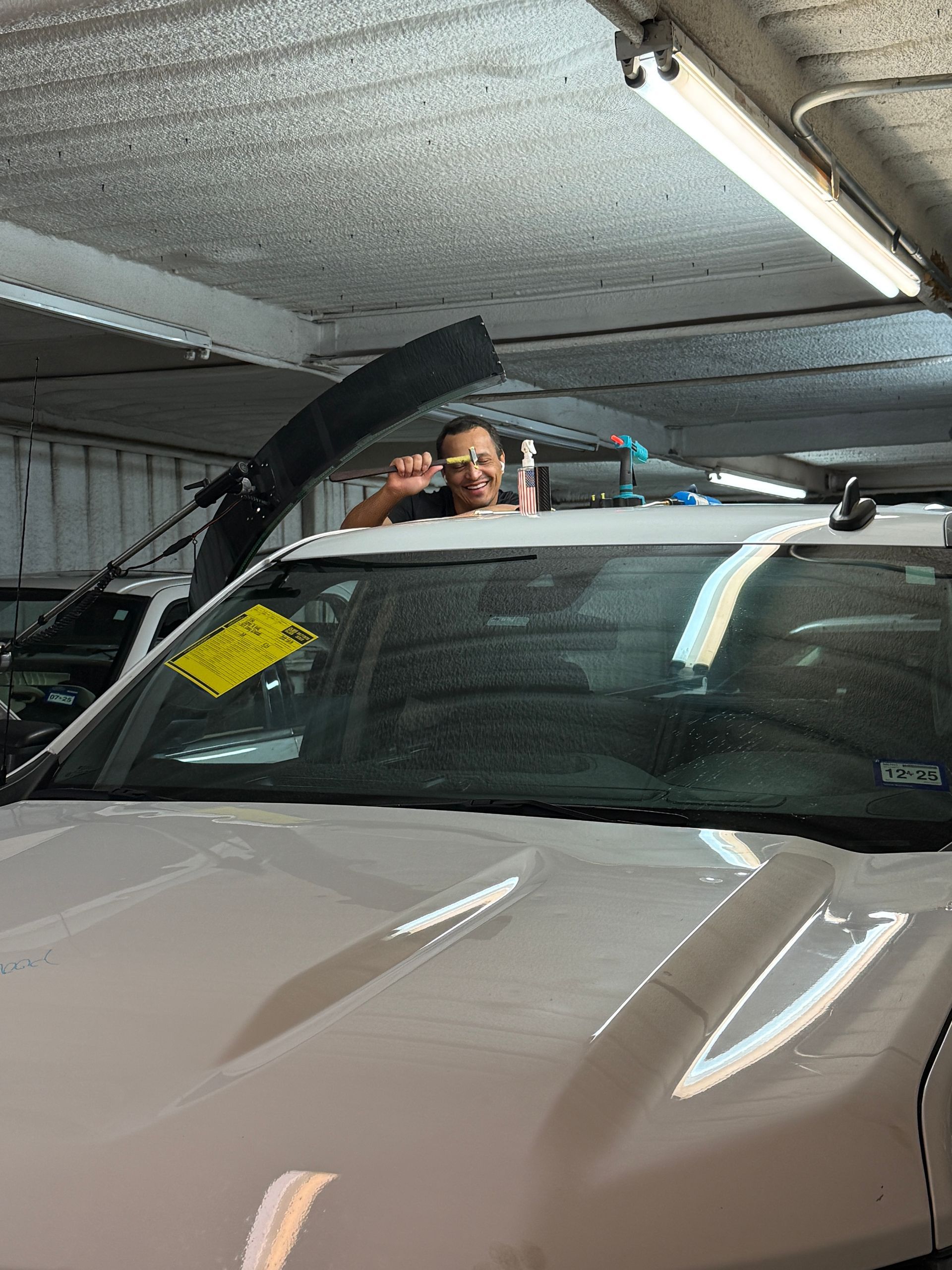
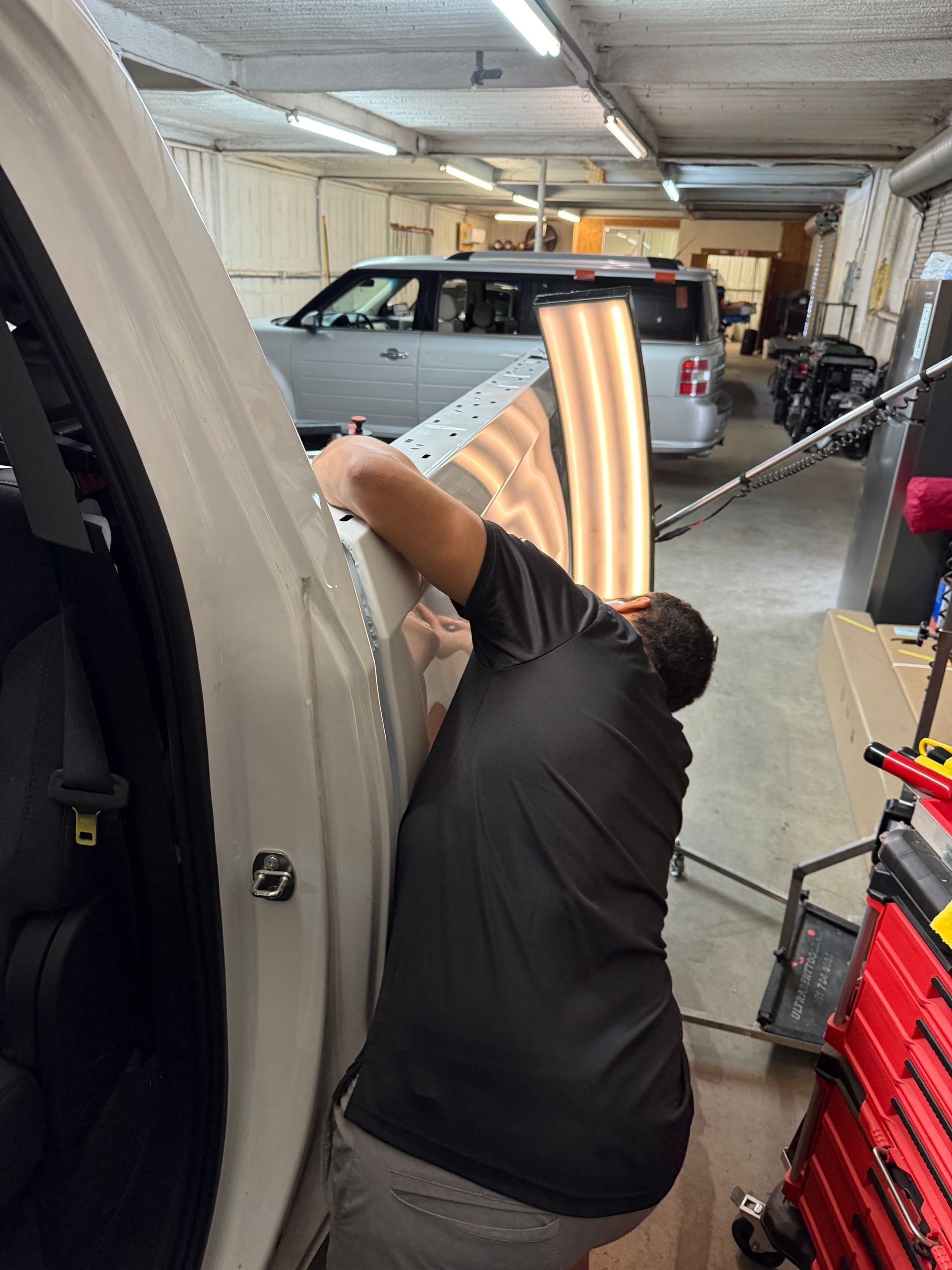
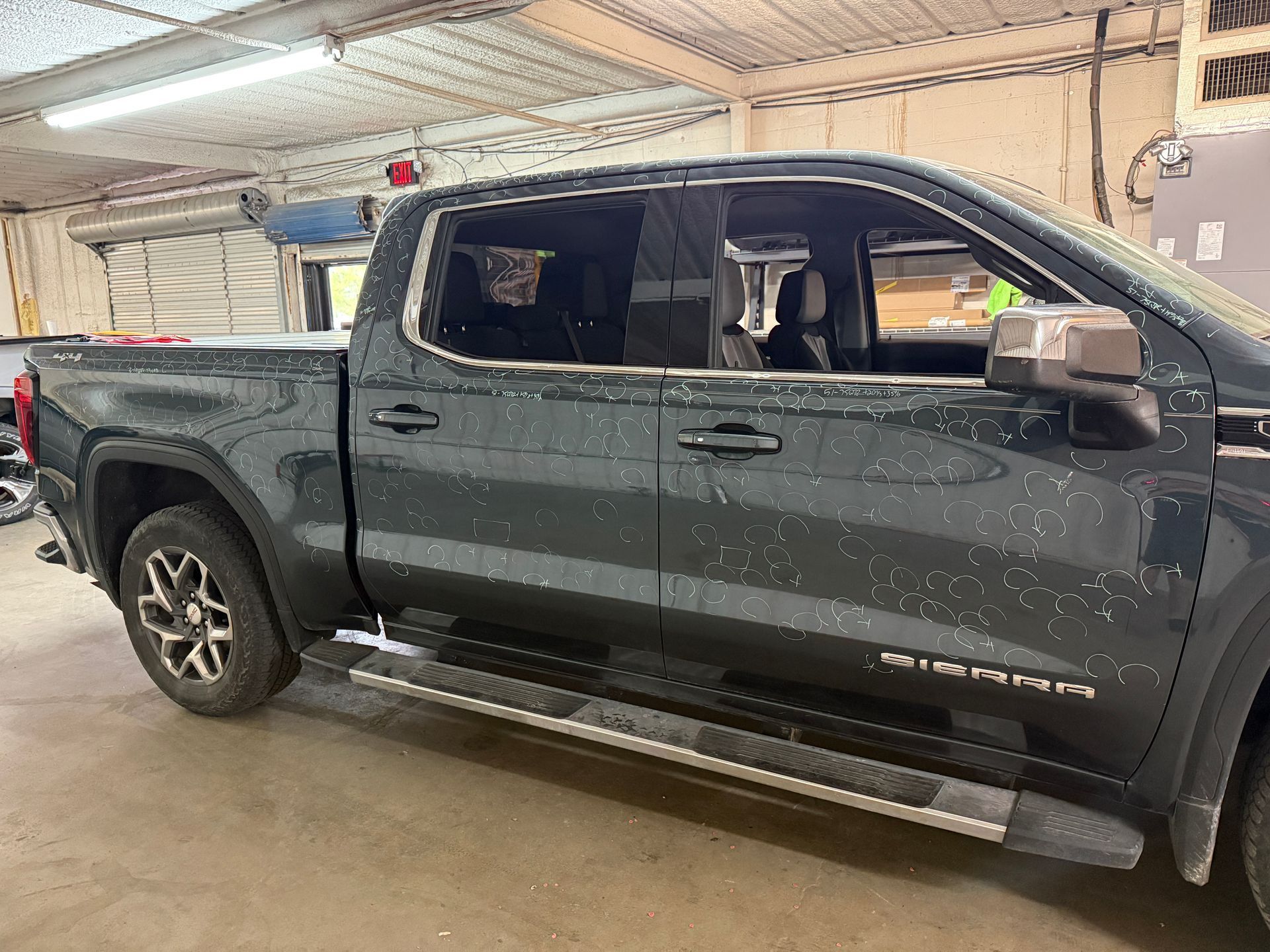
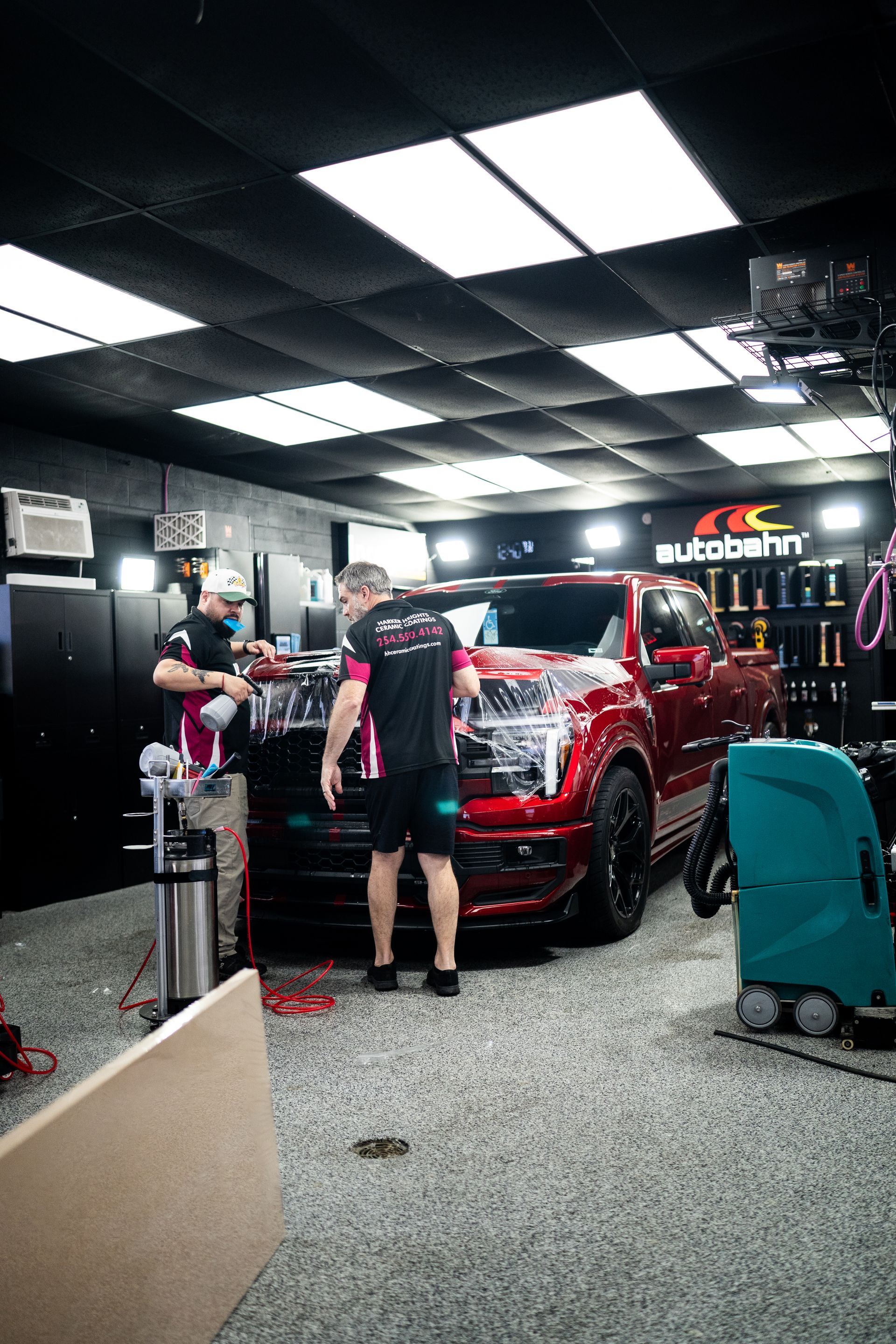
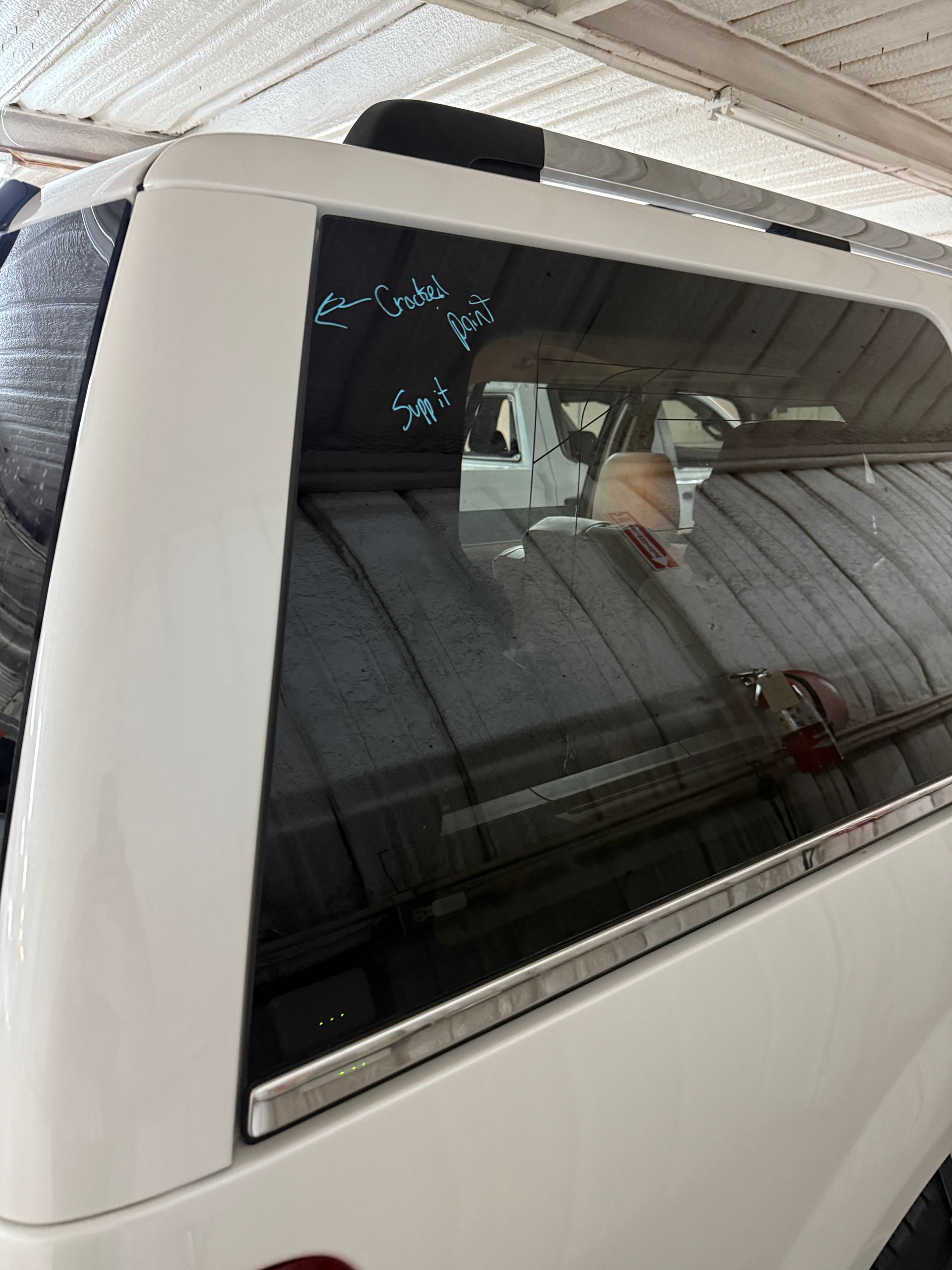
Harker Heights Ceramic Coatings began in 2021 with the goal of providing central Texas with premium vehicle detailing. Every service ensures long-lasting paint enhancement and renewed vehicle value. I believe in open communication and creating a lasting relationship with my clients by providing high-quality services that are tailor-made for your unique vehicle. Through the art of applying professional-grade ceramic coatings, a self-healing clear bra, performing paint correction, and my full-vehicle detailing services, every customer will receive top-tier protection with a showroom-worthy finish.
CALL (254) 550-4142
Get a Quote
service locations
Hours of operation
- Mon - Sun
- -
Harker Heights Ceramic Coatings is open seven days per week!
Contact Info
103 S Main St, Nolanville, TX 76559, United States of America
Follow Us
Harker Heights Ceramic Coatings Designed by the team at Detailers Roadmap, a platform developed for detailing operators across the globe.
All Rights Reserved | 8bitcreative, LLC | Harker Heights Ceramic Coatings

